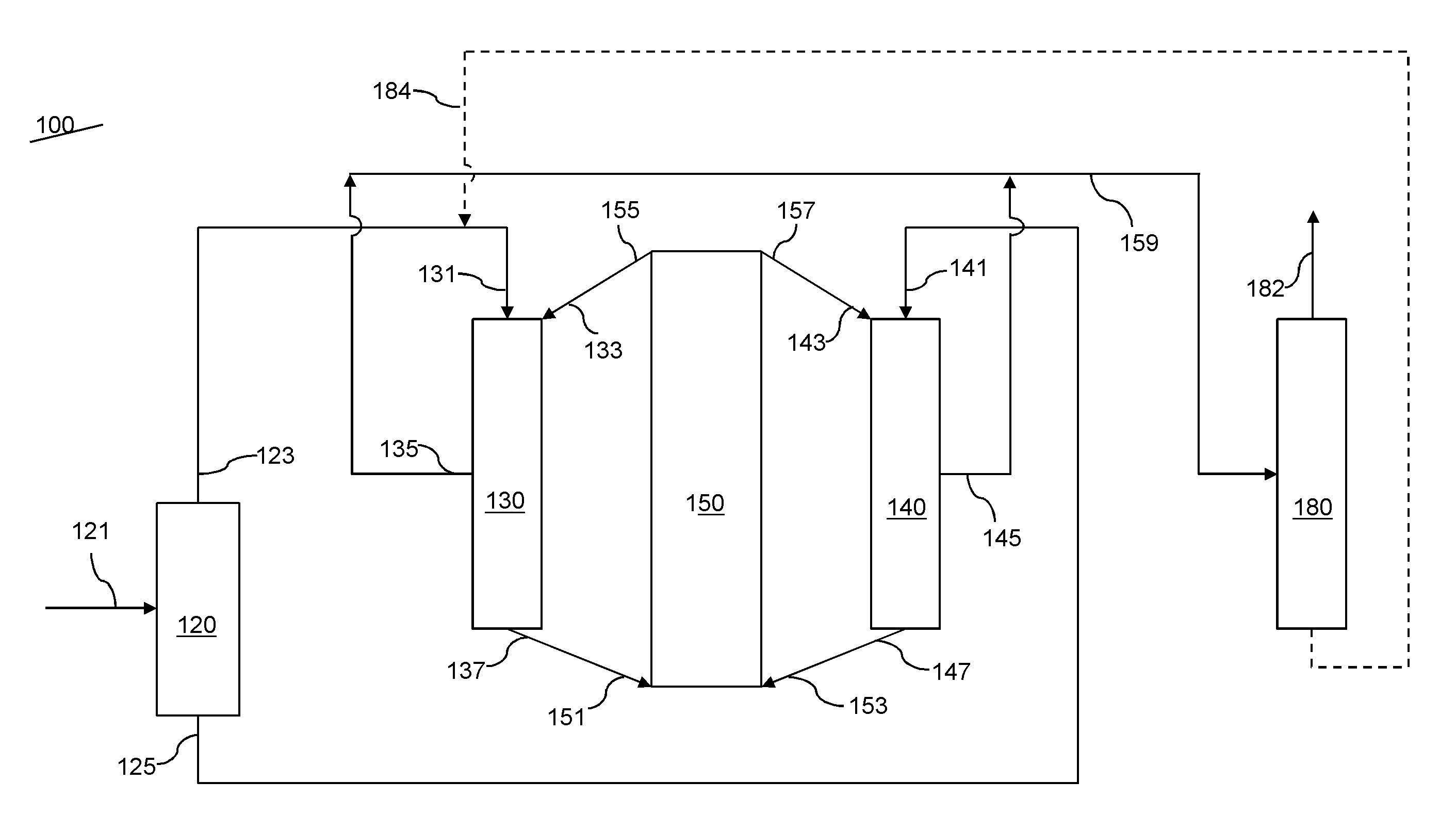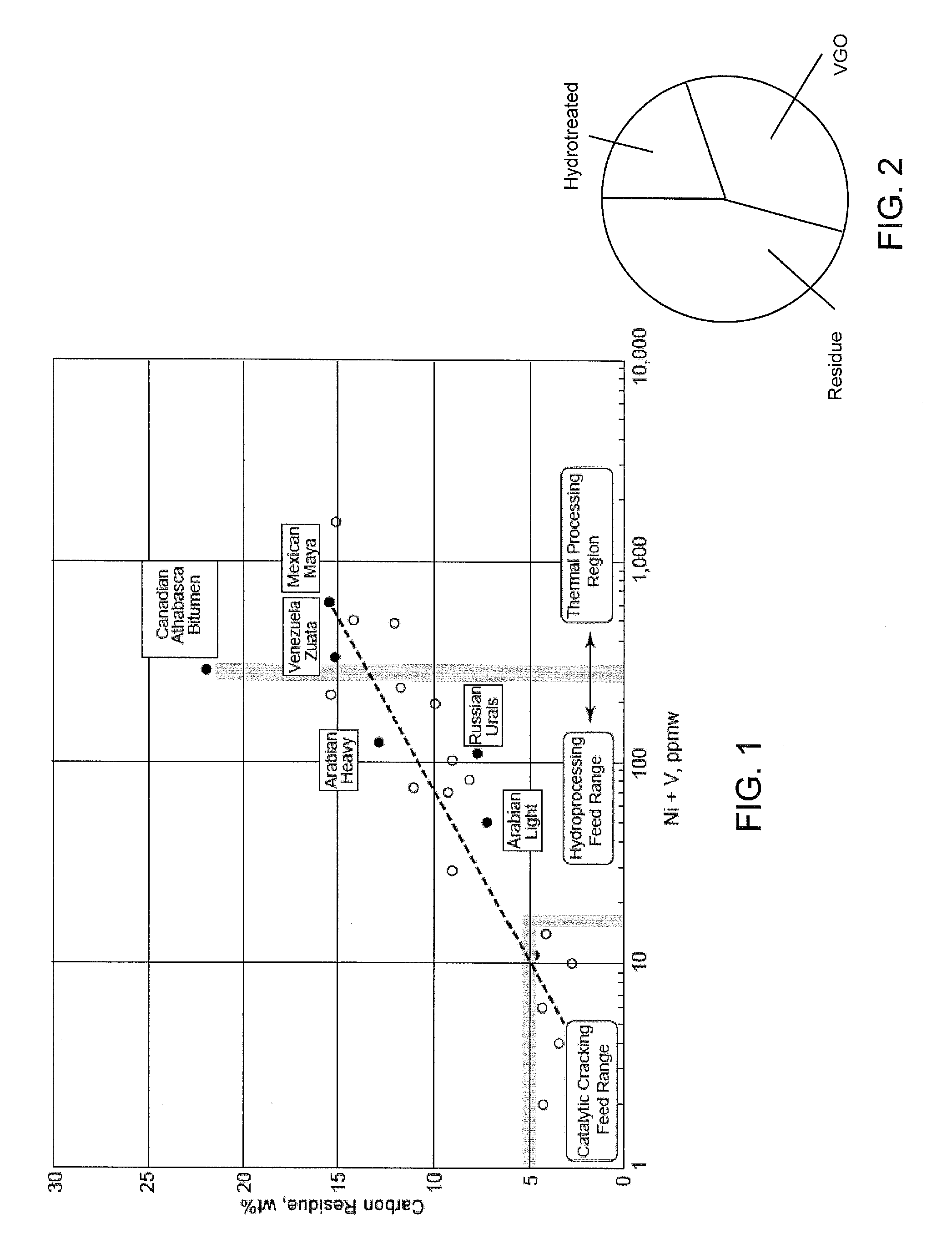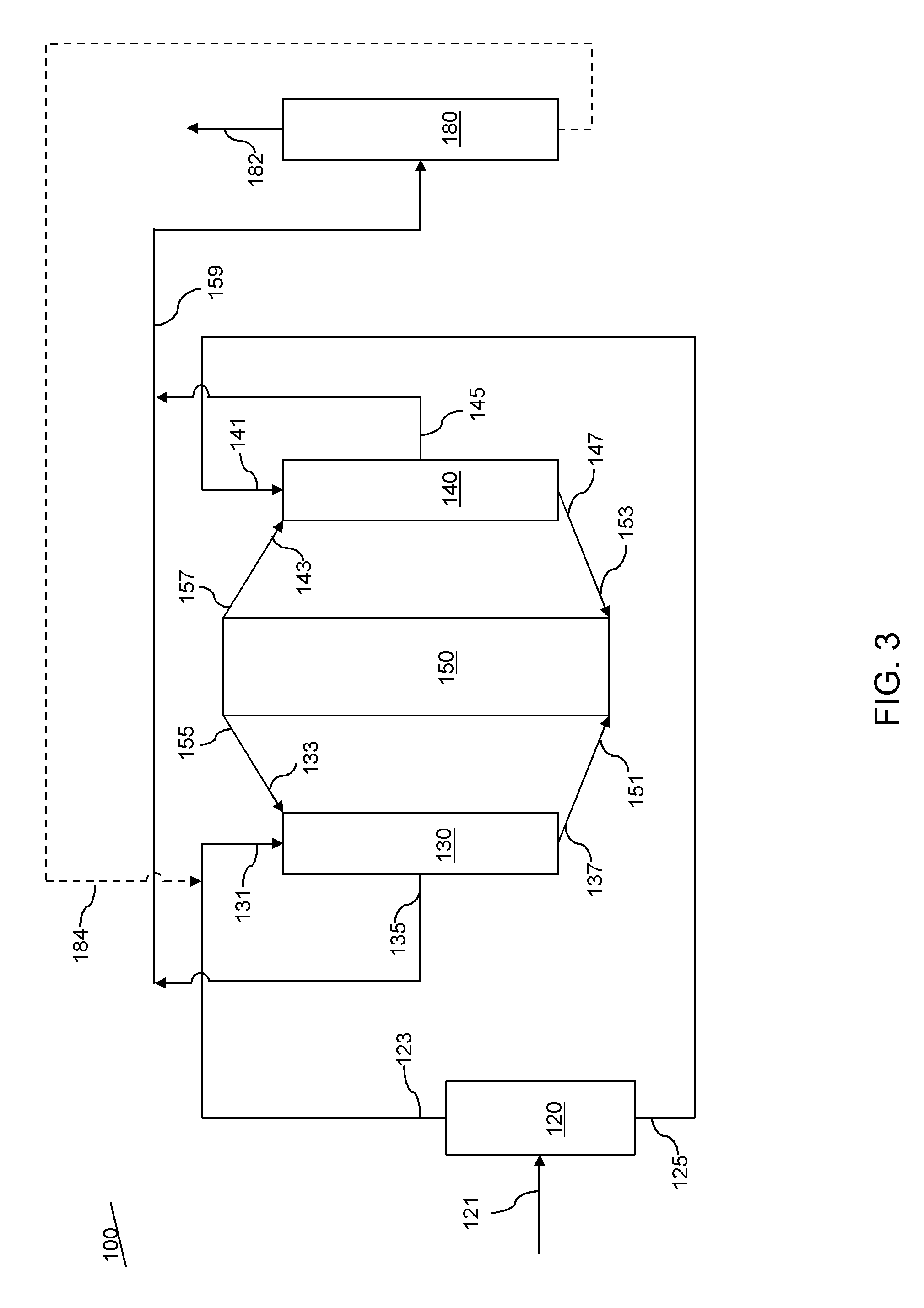Process for high severity catalytic cracking of crude oil
a crude oil and crude oil technology, applied in the field of fluidized catalytic cracking process, can solve the problem that the low carbon content of catalyst particles from the low boiling fraction downflow reactor is insufficient to provide the necessary heat, and achieve the effect of maximizing production
- Summary
- Abstract
- Description
- Claims
- Application Information
AI Technical Summary
Benefits of technology
Problems solved by technology
Method used
Image
Examples
example 1
[0047]Using the process disclosed herein in which the feedstock is fractioned into a low boiling fraction and a high boiling fraction, the crude oil feedstream was fractioned at a cut point of 300° C. Each fraction was sent to separate downers of a dual downer configuration for catalytic cracking at a cracking temperature of 600° C. in both downers. Each downer was operated at a catalyst-to-oil ratio of 31. The gasoline yield was 45.8 wt % for the heavy fraction and 54.2 wt % for the light fraction.
[0048]Overall product yields for both the comparative operation and the new operation are in Table 1, in which the products in the dual downer configuration were recombined.
[0049]
TABLE 1Product Yields, wt %Single DownerDual DownerProductsProducts, Recombined(Comparative 1)(Example 1)Ethylene3.6%3.6%Propylene13.1%13.5%Butene9.4%9.0%Dry Gas5.5%5.5%Gasoline47.9%47.2%LCO13.9%15.4%HCO2.8%3.5%Coke2.8%2.5%
example 2
[0051]Using the process disclosed herein in which the feedstock is fractioned into a low boiling fraction and a high boiling fraction, the crude oil feedstream was fractioned at a cut point of 300° C. Each fraction was sent to separate downers of a dual downer configuration for catalytic cracking at a cracking temperature of 600° C. in both downers. Each downer was operated at a catalyst-to-oil ratio of 20. Product yields for both the comparative operation and the new operation are in Table 2, in which the products in the dual downer configuration were recombined.
[0052]
TABLE 2Product Yields, wt %Single DownerDual DownerProductsProducts, Recombined(Comparative 2)(Example 2)Ethylene3.2%3.0%Propylene11.6%11.7%Butene8.6%8.3%Dry Gas5.2%4.9%Gasoline47.5%48.9%LCO16.7%17.1%HCO3.8%4.2%Coke2.4%2.2%
example 3
[0053]Using the process disclosed herein in which the feedstock is fractioned into a low boiling fraction and a high boiling fraction, the crude oil feedstream was fractioned at a cut point of 300° C. Each fraction was sent to separate downers of a dual downer configuration for catalytic cracking. The downer for the heavy fraction was operated at a cracking temperature of 600° C. and a catalyst-to-oil ratio of 31 and the downer for the light fraction was operated at a cracking temperature of 640° C. and a catalyst-to-oil ratio of 32. Product yields for both the comparative operation (comparative example 1) and the new operation are in Table 3, in which the products in the dual downer configuration were recombined.
[0054]
TABLE 3Product Yields, wt %Single DownerDual DownerProductsProducts, Recombined(Comparative 1)(Example 3)Ethylene3.6%5.2%Propylene13.1%15.8%Butene9.4%10.3%Dry Gas5.5%8.5%Gasoline47.9%43.1%LCO13.9%13.1%HCO2.8%3.4%Coke2.8%2.5%
[0055]It is observed that at the same cracki...
PUM
| Property | Measurement | Unit |
|---|---|---|
| temperature | aaaaa | aaaaa |
| temperature | aaaaa | aaaaa |
| temperature | aaaaa | aaaaa |
Abstract
Description
Claims
Application Information
 Login to View More
Login to View More - R&D
- Intellectual Property
- Life Sciences
- Materials
- Tech Scout
- Unparalleled Data Quality
- Higher Quality Content
- 60% Fewer Hallucinations
Browse by: Latest US Patents, China's latest patents, Technical Efficacy Thesaurus, Application Domain, Technology Topic, Popular Technical Reports.
© 2025 PatSnap. All rights reserved.Legal|Privacy policy|Modern Slavery Act Transparency Statement|Sitemap|About US| Contact US: help@patsnap.com



